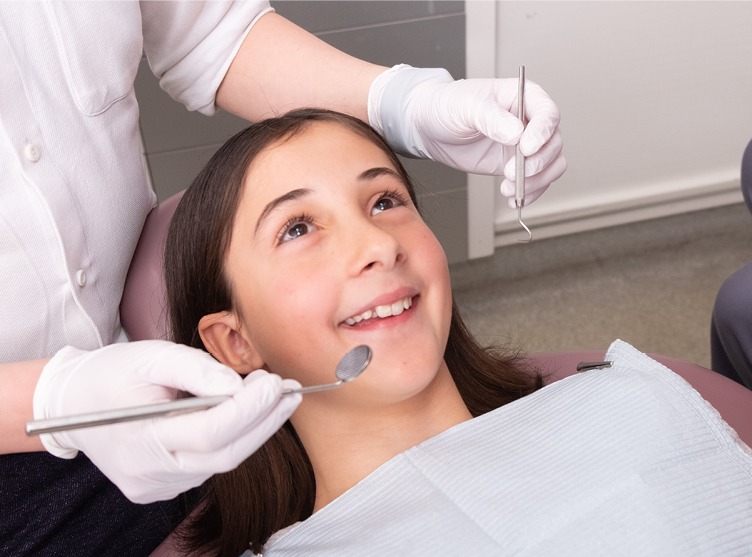The Best Strategy To Use For Legacy Orthodontics
The Best Strategy To Use For Legacy Orthodontics
Blog Article
Getting The Legacy Orthodontics To Work
Table of ContentsSome Known Details About Legacy Orthodontics Everything about Legacy OrthodonticsExcitement About Legacy OrthodonticsNot known Facts About Legacy OrthodonticsThe Facts About Legacy Orthodontics Uncovered
In addition, we use adjustable therapy schedules, flexible settlement alternatives and an enjoyable, enjoyable experience.An orthodontist is a dental practitioner educated to identify, prevent, and treat teeth and jaw abnormalities. They correct existing problems and are educated to determine issues that may develop in the future. Orthodontists deal with people of any ages, from children to grownups. Individuals typically link a perfect smile with good wellness.
Malocclusion, or misaligned teeth, can cause oral concerns, consisting of tooth decay, periodontal condition, and hard or uncomfortable chewing. Not everyone is birthed with straight teeth. If you have a poor bite or big rooms between your teeth, you might desire to consult a dentist concentrating on orthodontic treatment.
8 Easy Facts About Legacy Orthodontics Explained
( Picture Credit Report: DigitalVision/Getty Images) Orthodontists utilize repaired and removable oral gadgets, like dental braces, retainers, and bands, to change the setting of teeth in your mouth. Orthodontic therapy is for dental abnormalities, consisting of: Uneven teethBite troubles, like an overbite or an underbiteCrowded teeth or teeth that are too much apartJaw misalignmentThe goal of orthodontic therapy is to improve your bite.
While you may believe of orthodontists as primarily for children or teens that require dental braces, they can remedy dental issues at any kind of age. Orthodontists go to university, oral institution, and orthodontic institution.
, but not all dental experts are orthodontists. They concentrate on 2 locations: How to effectively and safely move teeth How to properly guide development in the teeth, jaw, and faceOnce an orthodontist has actually finished training, they have the choice to end up being board accredited.
The Best Strategy To Use For Legacy Orthodontics
Malocclusion leads to tooth overcrowding, an irregular jaw, or irregular bite patterns. Malocclusion is normally treated with: Your orthodontist attaches steel, ceramic, or plastic square bonds to your teeth.
If you have just minor malocclusion, you may have the ability to use clear braces, called aligners, as opposed to conventional dental braces (https://pinshape.com/users/6444811-legacyortho#prints-tab-open). Some individuals require a headgear to aid relocate teeth right into line with stress from outside the mouth. After braces or aligners, you'll check that require to put on a retainer. A retainer is a personalized tool that keeps your teeth in place.
They're usually used on children. They can create extra room in the mouth without having to draw teeth. If you have a major underbite or overbite, you might need orthognathic surgical procedure (also called orthodontic surgical treatment) to lengthen or shorten your jaw. Orthodontists use wires, medical screws, or plates to support your jaw bone.
You may need to see an orthodontist if you have: Crowding or otherwise enough area for every one of your teethOverbite, when your upper teeth come your base teethUnderbite, when your bottom teeth are as well far forwardSpacing or problems with gapsCrossbite, which is when your top teeth fit behind your bottom teeth when your mouth is closedOpen bite or an upright gap in between your front bottom and upper teethMisplaced midline, when the center of your base and upper teeth don't align Fixing a dental malocclusion can: Make biting, chewing, and speaking easierImprove the proportion of our face and your total appearanceEase discomfort from temporomandibular joint conditionsSeparate your teeth and make them much easier to clean, aiding prevent tooth degeneration or dental caries It's usually a dental expert that initially notices misaligned teeth during a routine test.
Legacy Orthodontics for Dummies

Throughout your first orthodontic assessment, you'll likely have: A dental examPhotos taken of your face and smileDental X-raysPanoramic (360 degree) X-rays of your face and headImpressions to develop molds of your teethThese tests will aid your orthodontist understand how to wage your treatment. invisalign. An orthodontist is a dental practitioner who's had training to treat your teeth and jaw
An orthodontist is concentrated on your bite, so something like a chipped tooth would be managed by a dental expert. Orthodontists are concentrated on your bite, or the way your teeth fit with each other, and the straightness of your teeth.
Ever questioned just how celebrities constantly seem to have flawlessly aligned teeth? The solution typically depends on the competent hands of an orthodontist. What specifically does an orthodontist do? Orthodontists are dental experts who concentrate on fixing abnormalities in the teeth and jaws. Their knowledge surpasses just producing a beautiful smile; it includes enhancing your total dental wellness and feature.
Legacy Orthodontics - An Overview

While braces are one of the most frequently identified orthodontic therapy, orthodontists have a diverse toolkit at their disposal. The specific approach chosen relies on the seriousness of the instance, the client's age, and specific preferences. These reliable braces use a system of brackets bound to the teeth and linked by wires.
These detachable trays are personalized to progressively shift the teeth's position. In cases of narrow jaws, palatal expanders can be utilized to create room for proper tooth placement.
Report this page